If any war were to break out between the US and China, one trigger might be the increasingly frequent fighter jet encounters near Taiwan.
Almost every day, Taiwanese fighter pilots hop in their US-made F-16s to intercept Chinese warplanes screaming past their territory. The encounters probe the nation’s defenses and force the pilots on both sides to avoid mistakes that could lead to a crisis that spins out of control.
“I didn’t know whether they would fire at me,” said retired colonel Mountain Wang, recounting a tense five-minute confrontation he had with Chinese People’s Liberation Army (PLA) jets more than a decade ago. “You have to be highly alert and not lead to any accident with unintended consequences.”
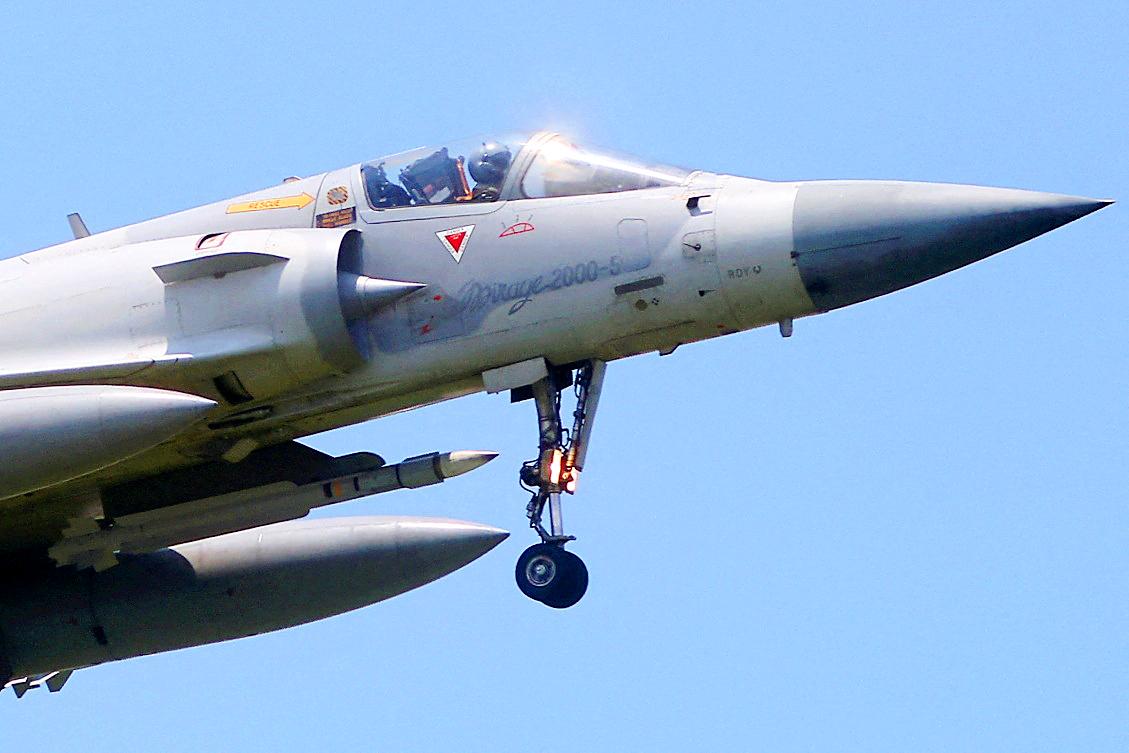
Photo: Ann Wang, Reuters
The risk is even higher now and not just because China is sending more jets with more experienced pilots ever closer to Taiwan proper.
On Wednesday, 27 Chinese military aircraft flew into Taiwan’s air defense identification zone, of which 22 crossed the median line of the Taiwan Strait, the Ministry of National Defense said.
The incursions took place a day before the launch of China’s live-fire military drills in six maritime areas near Taiwan, widely seen as retaliation for a visit by US House of Representatives Speaker Nancy Pelosi to Taiwan earlier last week.
The PLA fired 11 missiles into waters near Taiwan on Thursday, the ministry said, as part of China’s most provocative exercises in decades.
However, a longer-term problem for Taiwan’s military is its dire shortage of pilots. While Taipei is protected by a relatively large and modern fleet of fighter jets, the nation could need as many as 50 years at the current rate to train enough pilots to fill the cockpits of the jets they expect to get by the middle of this decade.
Taiwan might not have that kind of time.
US military commanders estimate Chinese President Xi Jinping (習近平) might have the capability to take action across the Taiwan Strait in as soon as five years, and the daily incursions are wearing down Taiwan’s pilots and the jets they fly.
The shortage illustrates the limits of Taipei’s reliance on purchases of US military hardware to deter the threat of invasion by Beijing. Taiwan would need to add at least 100 more pilots by 2026 to operate the 66 more advanced Lockheed Martin F-16Vs that President Tsai Ing-wen (蔡英文) agreed to buy two years ago.
ONLY 21 NEW PILOTS
The air force only netted 21 new F-16 pilots from 2011 to 2019, according to data compiled by the Taiwan People’s Party (TPP).
“Taiwan has put a lot of emphasis on military preparation,” TPP Legislator Jang Chyi-lu (張其祿) said. “A bigger problem, though, is who can fly the planes?”
Ukraine’s own months-long struggle to turn back Russia’s invasion has highlighted the challenge facing Taiwan’s strategic planners. Although Kyiv has received a huge influx of Western-made military hardware, it has also benefited from having a large reserve of relatively well-trained military personnel.
Taiwan’s effort to attract and train more pilots has been thwarted by a series of factors, from the nation’s declining birthrate to several high-profile crashes. About 80 percent of university students in Taiwan have myopia, due to long classroom hours and high-levels of screen time on electronic devices.
Taiwanese authorities say Ukraine’s success in denying air superiority to a much larger invading power has helped recruiting.
In March, 70 percent of 1,076 people polled by the Taiwan International Strategic Study Society said they were willing to go to war to defend their nation from Beijing’s attack, up from 40 percent in December last year.
Chiang Ming-chun, 18, said he was determined to be an air force pilot despite concerns about the safety risks and increased tensions with China.
“They asked me why not pick army or navy, why does it have to be air force? I just told my parents it is my ambition,” said Chiang, who would be a freshman at the Air Force Academy this year. “If I don’t do it now, I’ll regret why I didn’t chase my dream.”
That renewed determination to sign up was evident last month at the Seventh Flight Training Wing on the Chihhang Air Base in Taitung. The base, located on the Pacific coast, is to house the new F-16Vs, as well as 33 locally developed Yung Ying (勇鷹, “Brave Eagle”) Advanced Jet Trainers by 2024.
‘TOP GUN’ BOOST
Matt Shen, an instructor at the facility, said the release of Top Gun: Maverick — in which Tom Cruise can be seen sporting a Taiwanese flag patch on his jacket — has also driven new applicant interest.
“We think recruiting should be easier in the next two years because Top Gun is so popular,” Shen said, adding: “Many young men dream of flying.”
More than half of the 70 to 80 trainees annually at the center are now being sent to the F-16 wing, Shen said, compared with one-third a few years ago, due to an effort to deal with China’s increased military activity.
PLA aircraft made about 960 forays into Taiwan’s air defense identification zone last year, compared with about 380 in 2020, ministry data showed.
Such encounters are not just shows of power: Forcing Taiwan to drive away warplanes delays its ability to train new fighter pilots, depleting the nation’s capacity to respond in a real conflict.
The air force acknowledged in a statement that the pressure from China was “severe,” but said its capacity to respond had “never slackened.”
“The air force is actively increasing recruits, raising the distribution ratio of pilots to F-16 fleet and enhancing staff’s willingness to stay, and these measures are able to satisfy demands for future pilots,” it said.
LOWER GRADES
Flying schools have begun accepting trainees with lower academic grades to ensure they get more candidates who meet both the physical fitness and vision requirements. The air force has also made it easier for them to sign up in recent years, relaxing rules requiring 20-20 vision and offering corrective eye surgery to some.
Moreover, the busy schedule prevents experienced pilots from helping train new ones. Taiwan requires 250 hours of flight training before a pilot can fly a fighter jet like the F-16.
The Taiwanese military has also seen four air crashes this year, including a fatal one involving an F-16 in January. In May, an air force trainer jet also crashed, killing its pilot.
Chang Yan-ting (張延廷), a former vice chief commander of the air force, said that “insufficient training” was a contributing factor to such incidents.
“The crashes we have seen in air force in the past few years were just the tip of the iceberg, and the situation is expected to get worse in future,” he said.
Still, Shen said his own son also plans to become an air force pilot.
He is not deterred that his son is signing up despite the growing risk of a close encounter with a Chinese warplane.
“I encourage him to do so,” Shen said. “I’m not worried about death. Who can avoid death if a war breaks out? We are at the front line, and it’s our mission to guard the country.”
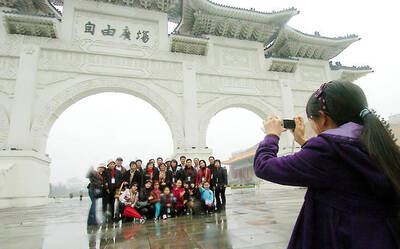
NUMBERS IMBALANCE: More than 4 million Taiwanese have visited China this year, while only about half a million Chinese have visited here Beijing has yet to respond to Taiwan’s requests for negotiation over matters related to the recovery of cross-strait tourism, the Tourism Administration said yesterday. Taiwan’s tourism authority issued the statement after Chinese-language daily the China Times reported yesterday that the government’s policy of banning group tours to China does not stop Taiwanese from visiting the country. As of October, more than 4.2 million had traveled to China this year, exceeding last year. Beijing estimated the number of Taiwanese tourists in China could reach 4.5 million this year. By contrast, only 500,000 Chinese tourists are expected in Taiwan, the report said. The report
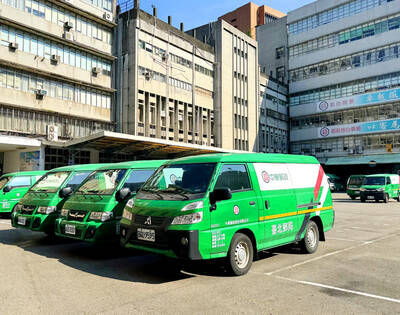
SHIPS, TRAINS AND AUTOMOBILES: The ministry has announced changes to varied transportation industries taking effect soon, with a number of effects for passengers Beginning next month, the post office is canceling signature upon delivery and written inquiry services for international registered small packets in accordance with the new policy of the Universal Postal Union, the Ministry of Transportation and Communications said yesterday. The new policy does not apply to packets that are to be delivered to China, the ministry said. Senders of international registered small packets would receive a NT$10 rebate on postage if the packets are sent from Jan. 1 to March 31, it added. The ministry said that three other policies are also scheduled to take effect next month. International cruise ship operators
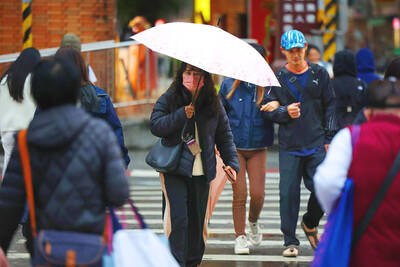
Temperatures are forecast to drop steadily as a continental cold air mass moves across Taiwan, with some areas also likely to see heavy rainfall, the Central Weather Administration (CWA) said. From today through early tomorrow, a cold air mass would keep temperatures low across central and northern Taiwan, and the eastern half of Taiwan proper, with isolated brief showers forecast along Keelung’s north coast, Taipei and New Taipei City’s mountainous areas and eastern Taiwan, it said. Lows of 11°C to 15°C are forecast in central and northern Taiwan, Yilan County, and the outlying Kinmen and Lienchiang (Matsu) counties, and 14°C to 17°C
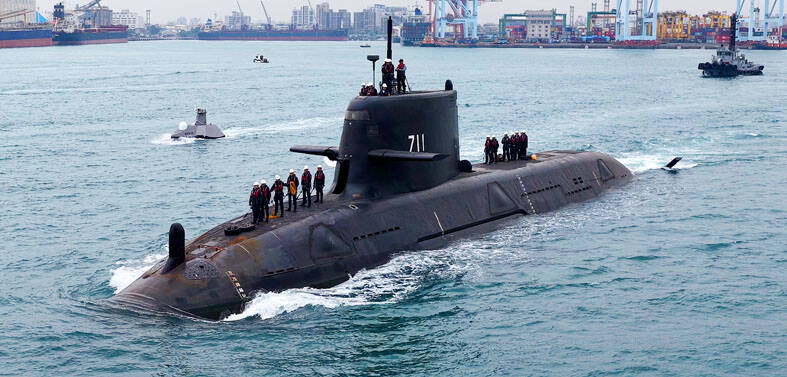
STEERING FAILURE: The first boat of its class is experiencing teething issues as it readies for acceptance by the navy, according to a recent story about rudder failure The Hai Kun (海鯤), the nation’s first locally built submarine, allegedly suffered a total failure of stern hydraulic systems during the second round of sea acceptance trials on June 26, and sailors were forced to manually operate the X-rudder to turn the submarine and return to port, news Web site Mirror Daily reported yesterday. The report said that tugboats following the Hai Kun assisted the submarine in avoiding collisions with other ships due to the X-rudder malfunctioning. At the time of the report, the submarine had completed its trials and was scheduled to begin diving and surfacing tests in shallow areas. The X-rudder,